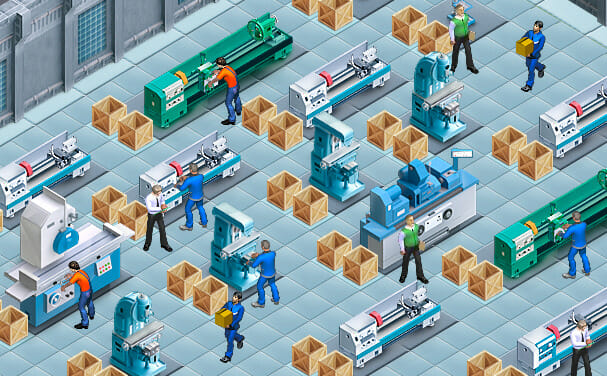Factory Raises Wages to Combat Labor Shortage
The skills and labor shortages continue to be significant pain points for manufacturers. The bottleneck has forced manufacturers to test various solutions, from signing bonuses, to hiring previously terminated employees.
Depending on who you are talking to, everyone has a theory: a lack of interest in manufacturing, a lack of access to trade classes in schools, too much welfare assistance and the age-old: they don’t pay enough.
An Ohio rubber parts factory recently took the $879,000 it received in Paycheck Protection Program (PPP) loans to test whether or not higher wages might help solve staffing problems.
According to the Wall Street Journal, Custom Rubber Corp President Charlie Braun used PPP money to raise wages. For example, the company struggles to fill machine operator positions, so Braun raised the starting hourly pay $4.55 per hour to $18.25 — it’s up to $19 per hour for the night shift. So far, things are going well.
Since January, the company has added 33 new employees, and profit has nearly doubled for the same period during a good year, up to 6% from the usual 3%.
Labor costs are now at 17% of sales, up about five percent, but when orders surged 50 percent in 2021, the extra labor helped Braun keep up. Employees also received their highest profit-sharing payout in nearly ten years.
However, the company’s president stresses that the pay raises could lead to wage compression and cause problems down the line as new hires come in at salaries comparable to long-tenured staff.
The jury is still out for Braun, who admits that slow sales could put the company in a difficult position with higher labor costs. However, Braun notes that money isn’t enough to prevent turnover. Company culture and safety also play a big role so, Custom Rubber has been looking into investing in automation and other equipment to make jobs easier.
When it comes to low wages, Braun admits that he leaned on the recession to keep wages down. He says the manufacturing industry is also to blame for fueling the labor shortage by keeping wages down.
According to a recent study by Deloitte and The Manufacturing Institute, the manufacturing skills gap could lead to 2.1 million unfilled jobs in the U.S. by 2030, costing $1 trillion in 2030 alone.
The industry lost 1.4 million jobs at the onset of the pandemic. While the sector recouped 63% of jobs lost, the loss set the labor force back by more than a decade.
Source: https://www.ien.com/video/video/21603110/factory-raises-wages-to-combat-labor-shortage?lt.lid=6113f0ba62515739242a4cae%3C.usr=6133J4747701D8A&utm_source=IMCD210805008&utm_medium=email&utm_campaign=08112021&utm_term=IMCD210805008&oly_enc_id=6133J4747701D8A

